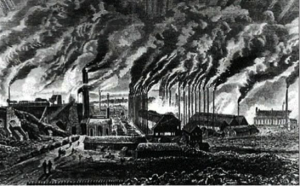According to the Content Marketing Institute, one of the biggest challenges confronting Australian content marketers is creating enough content, or at least enough content that engages. (And after all, what other kinds of content should there be?)
Brands are trying to get stuff out the door as quickly as possible in fear of the diminishing attention spans of their audience and the chaos and anonymity they think will descend if a SINGLE DAY goes by without a blog post, Facebook update or cool infographic.
Fear not my content marketing friends; it’s not true. As my dear wife points out, it’s not quantity but quality that counts. (Well, at least I think that’s what she means). Mark Schaefer said in his noted Content Shock post, our audiences are becoming deluged with content of dubious value and quality. Because the barriers to entry for content publishing are currently so low, any old tat can now find its way onto the Interweb masquerading as ‘content’.
Sadly, this ‘quantity over quality’ issue has been exacerbated by commentators and, frankly, the whole content technology market who exhort everybody to crank up the speed and churn out content. What you need, we’re told, is a content factory – mass-produced, consistent, low-cost, predictable-outcome content you can use to spam the inboxes of your prospects and customers until they…. well, unsubscribe you.
This is not the 18th century. This is not the industrial revolution. As content marketers we should not be content (pun intended) with an efficient machine churning out the identical, the indistinguishable and the useless. We need to create relevant, compelling and timely content answering customers’ unanswered questions and helping them make better decisions. We need a structure, a framework, an approach, which helps us manage the entire process of planning, creating, amplifying and measuring our content marketing efforts. We need this to ensure our content meets the needs of our customers and helps them make better decisions. And yes, we do need to systematise that process but it’s not the same for every content challenge.
This is not a lowest common denominator scenario. We don’t need a factory. We need something to power our brands’ customer engagement, something we can control that takes us to new levels, and something to meet each content challenge while providing a coherent structure. This isn’t just about creating content. This is about an all-encompassing approach to managing our content marketing efforts. We don’t need a factory; we need a Content Marketing Engine.
A content marketing engine will Fuel our content marketing with a thorough and robust plan built on
 a deep understanding of customers and their behaviours. It will Ignite prospects’ and customers’ interest with engaging content which is relevant, compelling and timely to their needs. It will enable brands to produce more and better content which markets effectively and Accelerates to greater commercial success.
a deep understanding of customers and their behaviours. It will Ignite prospects’ and customers’ interest with engaging content which is relevant, compelling and timely to their needs. It will enable brands to produce more and better content which markets effectively and Accelerates to greater commercial success.
To find out more about the Content Marketing Engine, join me at Content Marketing World in Sydney, Australia, on 18th March 2015 where the brightest content marketers will be meeting for the biggest content marketing event in Asia Pacific. You can also hear me speak in Perth. Get in touch with the good folks at Lush Digital Media to find out more about building a content engine.
by Geraint Holliman, Director of Strategy and Head of Content Marketing at DIRECTIONGROUP
If you’d like to know more about how to use brand storytelling to connect with your target audience, get in touch.











Doncha love how sometimes an analogy or phrase is just so perfect? Love this. Very simple way tp get across the quantity v quality argument with clients in a way they would find hard to refute!
I’m going to use it in my future presentations, Jonathan. I’m really looking forward to hearing Geraint speak next week at Content Marketing World.
[…] were fortunate in Perth to get a preview of Geraint Holliman’s presentation on building a content engine. Holliman definitely drew a parallel between early content marketing strategies and 19th-century […]
[…] marketing, one of the most common recommendations we make is to create a ‘brand newsroom’, a content marketing engine operating with a publishing mindset. In any effective brand newsroom, there will be a managing […]